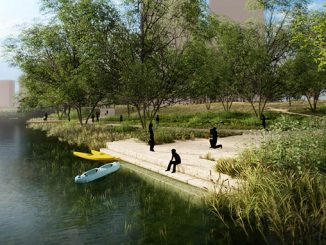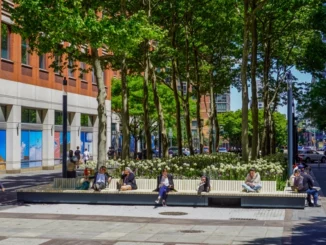The International Garden Festival is pleased to reveal the new contemporary gardens of its 22nd edition. Magic lies outside is the annual theme that aims to bring us hope, to exalt creativity and to add colour to this world that is struggling to overcome this global pandemic and to come out of several months of confinement.
Five projects have been selected to be part of the 2021 edition of the International Garden Festival from Canada, the United States, France and Sweden. They are added to the current gardens to form an open-air museum, thus offering a route of outdoor installations.

Here are the five new projects selected for the 22nd International Garden Festival:
Choose your Own Adventure
Balmori Associates [Noémie Lafaurie-Debany, Javier Gonzalez-Campana, Simon Escabi, Chris Liao, Cristina Preciado, landscapers and urban planners]
New York, États-Unis
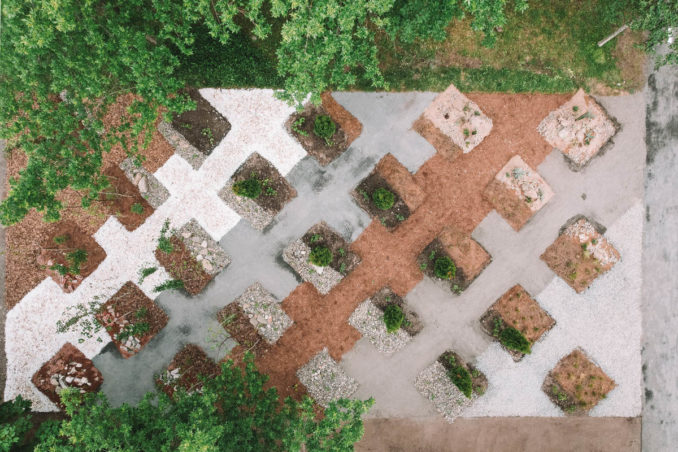
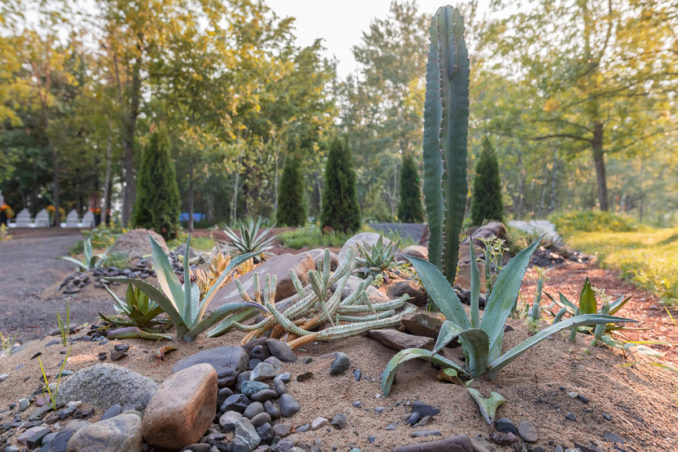
In the middle of a global pandemic brought upon us in part by global warming and its undeniable effects on all living things, fighting climate change by modifying our current toxic relationship with other living things and elements of nature: soil, water, air, plants and animals is now critical. Rethinking our connection to nature, after living in lockdown, can start with appreciating natural phenomena: the gusty wind, the wet bark, the musky shade, the dry air, the sweet smell, the hot stone, the crunchy gravels… The garden challenges the still frame images posted on the world wide web reminiscent of the eighteenth-century picturesque. Malcolm Andrews described tourists seeking the ideal landscapes as “‘fixing’ them as pictorial trophies in order to sell them or hang them up in frames on their drawing room walls” (aka Instagram of the twenty-first century!). But a landscape never happens twice, and its lack of fixity and hyper sensorial experiences are heightened through this simple matrix that forms the garden. Running East/West bands of planting intercepts North/South bands of different hard materials. CHOOSE YOUR OWN ADVENTURE, smell, touch, listen, taste and see.
Hässja
Emil Bäckström, architect
Stockholm, Sweden
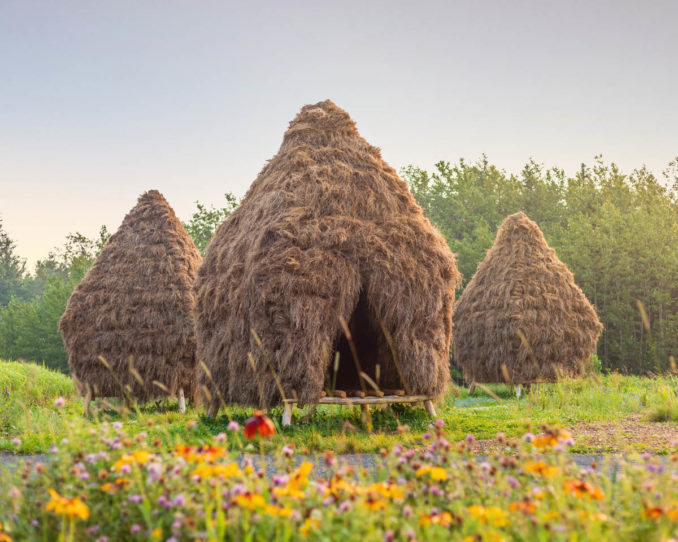
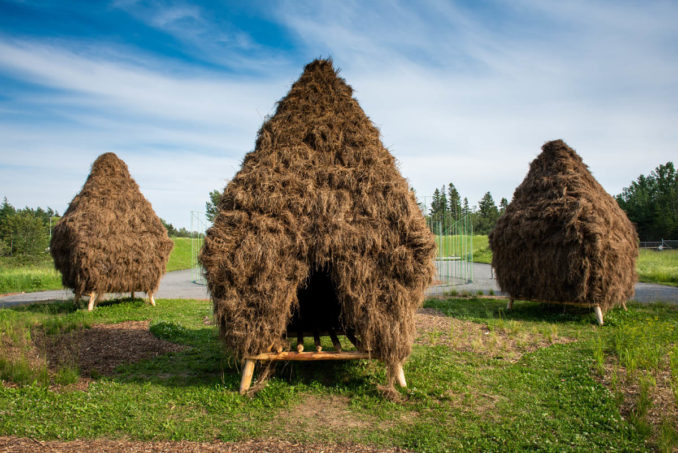
You can see them from afar, unknown, yet familiar creatures standing in the field – seemingly waiting. They catch sunlight and emits a warm golden glow. The wind makes them move slightly. You see them in a constellation, grouped together, but never too close to each other. They are the same kind, but each and every one of them have their unique shape and expression. A piece of nature that has been transformed into something living. When you get close enough, you can see that the creatures are made up of millions of individual objects, straws of hay. Moving closer, you can feel the distinct smell and you can touch both the sharp and soft flesh of the structures. And then you crawl inside. The covid-19 pandemic has taught us a lot. It has exposed a disconnection from nature, agriculture and the importance of biodiversity. All around the globe, a regained interest in traditional, sustainable ways of inhabiting the earth is emerging. Hässja is an installation based on one of these nearly lost arts of working the soil – hay-drying structures. The three structures, made out of the very plants surrounding them, are not only educational, they are formed and arranged in a way that enhances their inherited visceral qualities. Unlike normal hay-drying structures, these have an interior room. The small space inside each provides a refuge from the world of today, and provides for reflection on man’s relation to nature, to past and future ways of inhabiting our land.
Miroirs acoustiques
Emmanuelle Loslier, landscape architect, Camille Zaroubi, landscape architect
Montreal (Quebec) Canada
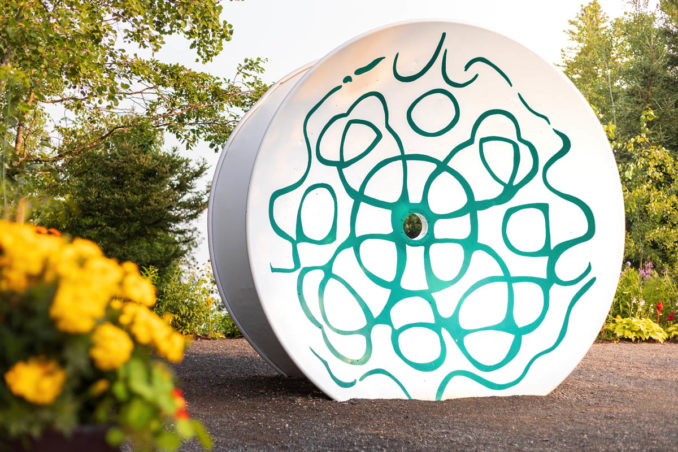
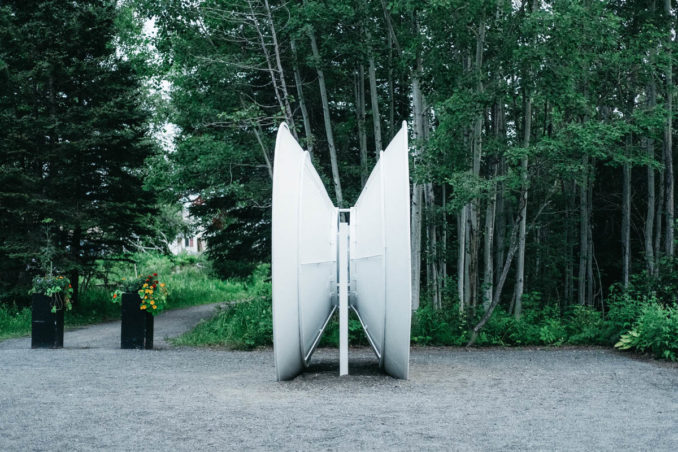
Sound mirrors are passive devices used to reflect and focus sound waves. Historically, they were implemented across the coast of Great Britain during World War I to detect incoming enemy aircraft. Sound waves bounce off the parabolic reflector and meet at the focal point where they are amplified, creating the illusion that whatever is making the sound is right next to you. Miroirs acoustiques consist of two parabolic reflectors (recycled aluminum antennas) planted in the ground. Positioned back-to-back, one point to the festival, an anthropogenic environment, and the other points to a forested area and the St. Lawrence. Visitors are invited to experience the two contrasting soundscapes. The focal point is marked on the ground showing visitors where to stand. A hole in the centre of the sound mirrors encourages visitors to observe the environment on the other side of the installation and, in doing so, places them in the optimum position to hear the focused sound waves.
Open Space
legaga [Gabriel Lemelin, Francis Gaignard, Sandrine Gaulin, architectural interns]
Quebec (Quebec) Canada
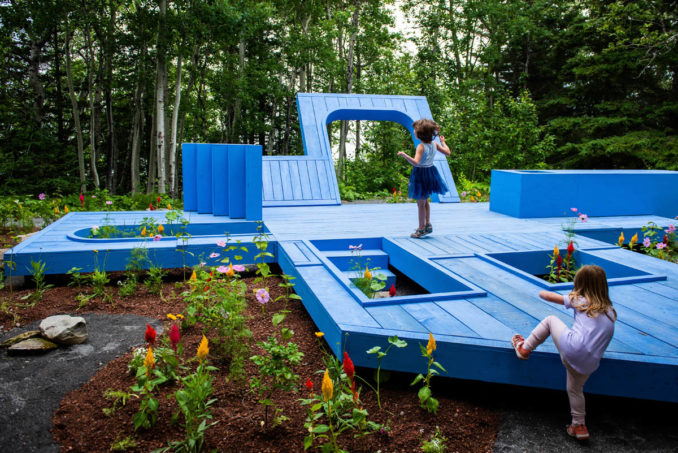
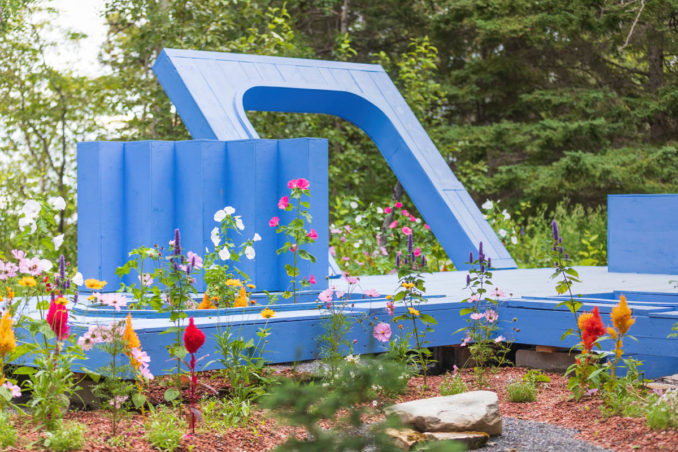
The title of this garden says it all — this installation is a figurative and literal open space. In Open Space, the walls of a typical house are opened out to create an open floor plan with endless possibilities. With a flick of a wand, everyday household objects—doors, staircases, windows and walls—take on new meaning. We can walk up and down the walls, dangle our feet through the door, stand and chat around the staircase, sit on the fireplace, the possibilities really are endless. In the past year, houses have become a symbol of lockdown. In Open Space, they go back to being a fun, safe and familiar place where you can let your imagination run wild. And when you let your imagination run wild, you can find magic anywhere.
Porte-bonheur
David Bonnard, DE-HMONP architect, Laura Giuliani, landscaper, Amélie Viale, visual artist
Lyon, Villefranche sur Saone and Lissieu, France
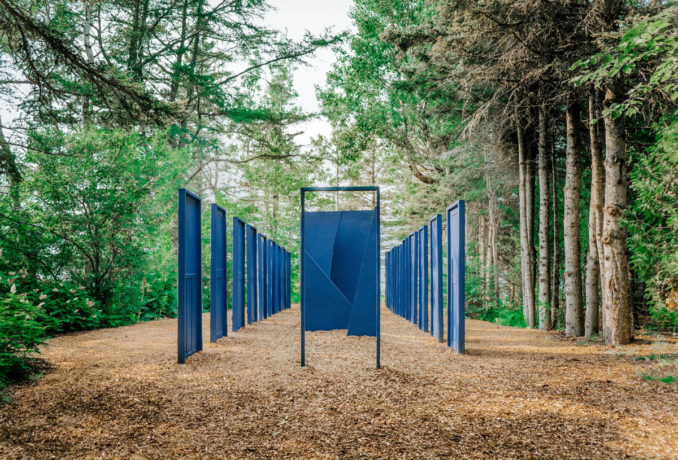
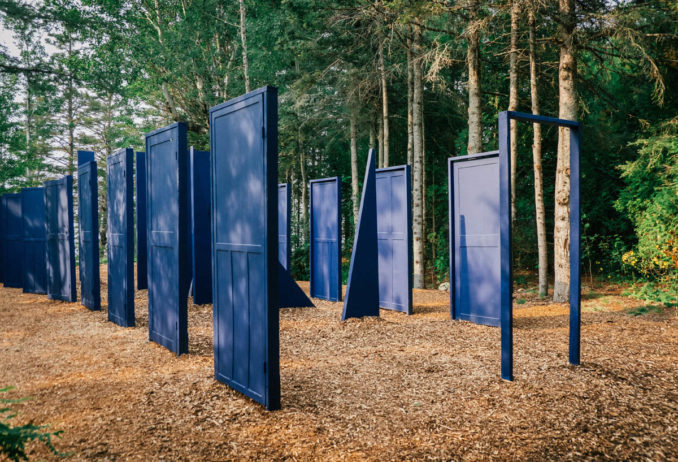
Doors have long been considered a departure point, a gateway to step through on our way to adventure. Yet in the past year, doors have taken on a different meaning. Rather than throwing the door open and heading to adventure, our doors have remained firmly shut, keeping us apart from the people we love. Porte Bonheur is a rite of passage between reality and potentiality. The installation invites visitors to dare to throw open the door, cross thresholds, go outside and explore their surroundings with all the wonder of a small child. A reawakening through subtle distortion where a door—our daily symbol of lockdown—becomes something virtual and gradually disappears as the visitor wanders through the installation towards a new horizon. A natural, peaceful horizon, because there’s no doubt about it, the magic is outdoors.
22nd International Garden Festival
The 22nd International Garden Festival at Reford Gardens is open daily until October 3, 2021, in addition to being accessible to members in the low season.
Learn more about the 22nd International Garden Festival at https://jardinsdemetis.com/en/the-international-garden-festival/

